Safeguarding Partnership Arrangements 2023
Introduction
In this publication the safeguarding partners have set out how they, along with other organisations, including education and early years, will work together to safeguarding children in Staffordshire. These safeguarding partnership arrangements are in response to the Children and Social Work Act 2017 and Working Together 2018, which replaced Local Safeguarding Children Boards with new local multi-agency safeguarding partnership arrangements.
In Staffordshire, safeguarding partners have come together to deliver a system that protects children, especially the most vulnerable.
Protecting, safeguarding, and ensuring the wellbeing of children are complex tasks that can only be successfully achieved by agencies working together in a coherent and effective manner.
Our safeguarding partnership arrangements have been informed through consultation with a wide range of stakeholders, including current Safeguarding Board partners and Executive Group members, Head Teacher Forums and Designated Safeguarding Leads from across the partnership. Organisations across Staffordshire are supportive of our safeguarding arrangements that consider a broader Staffordshire footprint to reduce duplication of effort and improve efficiency of the partnership, but also has the flexibility to recognise local difference and drive for better partnership outcomes for vulnerable children.
We have put in place safe and effective new arrangements to safeguard our children and the Board has adopted the title of Staffordshire Safeguarding Children Board.
Staffordshire
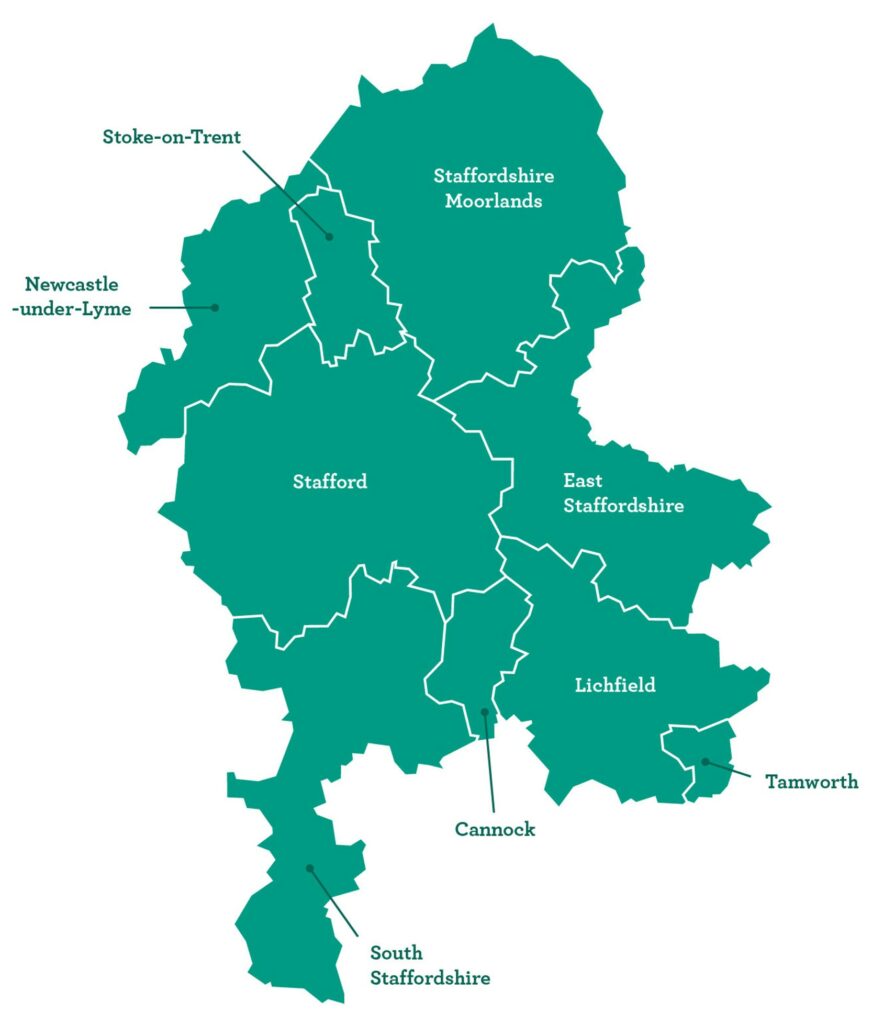 Safeguarding children, especially the most vulnerable, is a core duty and responsibility for all agencies in Staffordshire.
Safeguarding children, especially the most vulnerable, is a core duty and responsibility for all agencies in Staffordshire.
Protecting, safeguarding, and ensuring the well-being of children are complex tasks that can only be successfully achieved by agencies working together in a coherent, honest, and effective manner.
The vision of the Staffordshire Safeguarding Children Board:
“All partners are committed to working together so that every child in Staffordshire is safe, well and able to reach their full potential”.
The Board recognises that for it to be successful it will strive and attain to the following values:
- Accountable
- Transparent
- Listening
- Empowering
- Learning
- Respect
To deliver this vision, the Board safeguards and promotes the welfare of children by focusing on prevention, early intervention, and statutory intervention. This will consider the need to promote equality of opportunity and meet the diverse needs of all children living in our communities.
“Coming together is a beginning, Keeping together is progress. Working together is a success” – Henry Ford
Safeguarding Arrangements
To identify and prevent harm and impairment of health or development and ensure that all children are provided with safe and effective care as they are growing up by:
- Ensuring mechanisms are in place to identify abuse and neglect wherever they may occur.
- Working to increase the understanding of safeguarding children issues and children in care in the professional and wider community, promoting the message that safeguarding children is everybody’s responsibility.
- Helping to ensure that organisations working or in contact with children operate safe recruitment and safe workforce practices that consider the need to safeguard and promote the welfare of children.
- Monitoring the effectiveness of organisations’ implementation of their duties under section 11 of the Children Act 2004.
- Helping to ensure that children know who they can contact when they have concerns about their own or others’ safety and welfare.
- Helping to ensure that adults (including those who are harming children) know who they can contact if they have a concern about a child or young person.
- Supporting the development of effective local strategies in respect of key national safeguarding children agendas
To be proactive and commission and request assurance on targeted work:
- To safeguard and promote the welfare of children who are potentially more vulnerable than the general population, for example: children living away from home; children who have run away from home; children who have adversely come into contact with the police; children in the youth justice system; children excluded or missing from education; young carers; children with SEND and children and young people affected by gangs.
- Through the development and evaluation of threshold and procedures for work with children and families where a child has been identified as being ‘in need’ under the Children Act 1989 and Early Help.
- To protect children who are suffering or likely to suffer significant harm (section 47, Children Act 1989), including:
 Children abused and neglected within families, including those harmed, in the context of domestic abuse; as a consequence of the impact of substance misuse or parental mental ill health
Children abused and neglected within families, including those harmed, in the context of domestic abuse; as a consequence of the impact of substance misuse or parental mental ill health- Children abused outside of families by adults known to them; including those in fear of or subject to forced marriage and honour-based violence
- Children abused and neglected by professional carers, within an institutional setting, or anywhere else where children are cared for away from home
- Children abused by strangers
- Children abused and or exploited by other young people
- Young perpetrators of abuse
- Children abused through sexual exploitation and child trafficking
- Young people experiencing adverse childhood experiences that can impact on their lives, such as risk of offending, and
- Young victims of crime
The purpose of local safeguarding children arrangements is to support and enable local organisations and agencies to work together in a system where:
- Children are safeguarded and their welfare promoted
- Partner organisations and agencies collaborate, share and co-own the vision for how to achieve improved outcomes for vulnerable children
- Organisations and agencies challenge appropriately and hold one another to account
- There is early identification and analysis of new safeguarding issues and emerging threats
- Learning is promoted and embedded in a way that local services for children and families can become more reflective and implement changes to practice
- Information is shared effectively to facilitate more accurate and timely decision making for children and families
Working Together 2018
Governance
The Safeguarding Children Board is committed to multi-disciplinary partnership working in order to overcome ‘silo’ working and to deliver effective outcomes and a positive impact on the lives of young people.
Strong leadership is critical for the safeguarding arrangements to be effective in bringing together the various organisations and agencies and Working Together states clearly who the lead representatives for safeguarding partners are:
- Local authority chief executive
- The accountable officer of an Integrated Care Board (ICB)
- A chief officer of police
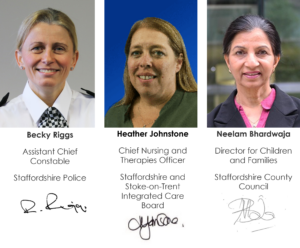 In Staffordshire this responsibility has been delegated to
In Staffordshire this responsibility has been delegated to
- Director for Children and Families – Staffordshire County Council
- Chief Nursing and Therapies Officer – Staffordshire and Stoke-on-Trent Integrated Care Board
- Assistant Chief Constable – Staffordshire Police
As outlined in Working Together to Safeguard Children (2018), the Board will build collaborative partnerships with others including the Stoke-on-Trent and Staffordshire Adult Safeguarding Partnership Board and the Staffordshire Health and Wellbeing Board, to further streamline services, identify and address gaps and avoid duplication.
The Board recognises the importance of working with a full range of partners to protect children and promote their best interests, agree priorities, and share resources.
Principles
The Safeguarding Partners will achieve:
- A child centred approach for services that are based on a clear understanding of the needs and views of children and families.
- Advocating a collective responsibility for safeguarding being everyone’s business
Our Structure
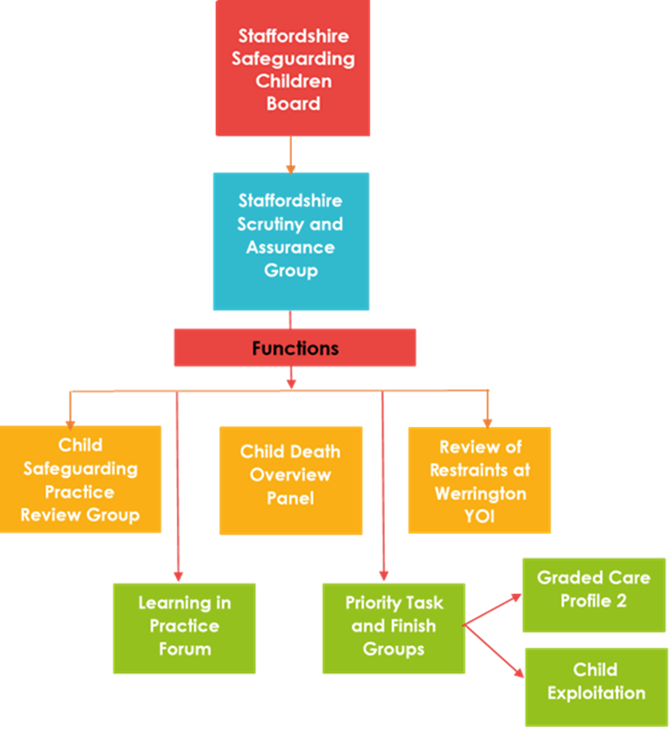
Priorities
The priorities for 2022-25 were agreed by the Board and will remain flexible for the duration of the Business Plan, and the detail will be set out in specific work plans of the subgroups and, where required task and finish groups.
The plan also aims to ensure that the safeguarding partners continue to oversee and drive improvements in its ‘’Core Business’’.
Additionally, using its statutory functions the Board, will scrutinise the arrangements for keeping children safe, and seek assurance, from each partner, as well as from other strategic groups with responsibility for children and families, that their needs are being met through a coordinated provision of services, and that through engagement and empowerment, they continually strive to achieve the best possible outcomes (Chapter 3, Working Together 2018).
The themed priority for 2022-2025 continues to be neglect with a specific focus on infants under one with additional assurance priorities for vulnerable children, in particular child exploitation, domestic abuse, early help and the impact of the coronavirus (COVID-19) pandemic.
Themed Priorities
Neglect – The safeguarding partners will ensure a confident workforce with the right tools at the right time and will provide a strengthened governance structure across all children’s services.
Assurance priorities
Child Exploitation – will concentrate on educational awareness of the ‘victim’ first approach to perpetrators.
Domestic Abuse – will concentrate and work together on the impact domestic abuse has on the child at all times.
Early Help – will ensure early help support is available at any point in a child’s life.
Impact of Covid 19 – assurance will be sought through monitoring and governance oversight.
Voice of the Child – will adopt a listening culture and engage with our children, families and workforce to ensure their voice is considered when shaping our strategic direction.
Our Core Business – are continually seeking assurance that the system is working well to keep children safe and encouraging its partners to be innovative, creative and effective in their shared commitment.
Additional functions of the revised Safeguarding Partnership Arrangements
Thresholds
The safeguarding partners will oversee regular review and dissemination of the Staffordshire Thresholds Framework. The Threshold acknowledges that all professional need a framework to help them recognise risk and agree an appropriate response and ensure a consistent and clear response to children’s safeguarding and wellbeing. This document is available to all professionals via the Board’s website.
Learning and development
The Board is fully committed to multi-agency workforce development and will seek a range of ways to deliver key safeguarding messages and test how the learning has been implemented in practice.
The SSCB multi-agency training offer will be reviewed during 2023/2024 and the Board will ensure that there is a training offer available to public sector, private sector and voluntary sector, education establishments (0-25) and charities.
The Board will use feedback from multi-agency audits, inspections/ regulators, section 11 and section 175/157audits, children, young people and families as well as views from front-line practitioners to demonstrate its impact on the safeguarding of children.
Independent scrutiny
 The safeguarding partnership arrangements are independently reviewed to assess the effectiveness of delivery against its priorities. These arrangements inform future developments of the safeguarding multi-agency partnership and its functions.
The safeguarding partnership arrangements are independently reviewed to assess the effectiveness of delivery against its priorities. These arrangements inform future developments of the safeguarding multi-agency partnership and its functions.
Safeguarding partners will identify key lines of enquiry that independent scrutiny will utilise to ensure they are effective in meeting their statutory duties under Working Together to Safeguard Children 2018 guidance. The arrangements will identify where there has been progress in the safeguarding of children in the local area and contribute to setting objectives, and areas of focus for the year ahead.
Multi-agency partners working with children and families have specific statutory duties to promote the welfare of children and ensure they are protected from harm under Section 11 of the Children Act 2004 and under Section 175/157 of the Education Act 2002. These duties are detailed in Chapter 2 of the Working Together to Safeguard Children 2018 statutory guidance.
Yearly Report
The Board will publish a yearly report setting out what has been done during that 12-month period. The report will be independently scrutinised and be available to all relevant partners for dissemination throughout their organisations on the Boards website.
The report sets out what the Board have done as a result of these Safeguarding Partnership Arrangements, including local child safeguarding practice reviews, and how effective these arrangements have been in practice. It will demonstarte:
- Evidence of the impact of the work of the safeguarding partners and relevant agencies, including
- training, on outcomes for children and families from early help to children in care and care leavers
- An analysis of any areas where there has been little or no evidence of progress on agreed priorities
- A record of decisions and actions taken or planned by the partners in the report’s period to implement the recommendations of any local and national child safeguarding practice reviews, including any resulting improvements
- And demonstarte ways in which the partners have sought and utilised feedback from children and families to inform their work and influence service provision
Agencies we work with
Relevant agencies are those organisations and agencies whose involvement the safeguarding partners consider is required to safeguard and promote the welfare of local children. Strong, effective multi-agency arrangements are ones that are responsive to local circumstances and engage the right people.
The safeguarding partners will work with those agencies who it deems as most appropriate to ensure it meets its statutory duties, and to maintain and improve collaborative working.
Arrangements may fluctuate from time to time as local arrangements change depending upon priority areas. As such, the Board will work alongside those agencies to enable clear expectations, individual agency responsibilities are taken into account such as those who have a national remit, i.e., West Midlands Ambulance Service and Cafcass, and the potential for further contribution to local arrangements.
Education
Education is identified as a relevant partner[1] and therefore must act in accordance with the local safeguarding partnership arrangements[2]. The requirements of the statutory guidance Working Together to Safeguard Children [2018] place a number of duties on Local Authorities, School Governing Bodies and proprietors of academy schools which include the trust itself, under Section 175 of the Education Act 2002. These include reference to the need to make arrangements to safeguard and promote the welfare of children.
It has therefore been agreed, by the safeguarding partners that relevant partners will provide annual assurance to the Board on the effectiveness of their arrangements for keeping children safe under the statutory guidance of Working Together including Keeping Children Safe in Education 2023. This process will be facilitated by the local authority via the use of their audit tool and will aim to demonstrate compliance against their statutory duties, as well as best practice and and will be completed by all education providers.
The Education Safeguarding Advice Service (ESAS) provides safeguarding information, support, and guidance in order to enhance safeguarding policy in practice in all Staffordshire schools and FE colleges. The intention is not to do things to or for people, but to empower members of staff to do these things, building capacity and enhancing knowledge. ESAS support the Designated Safeguarding Lead’s in schools to use Staffordshire Safeguarding Children Board (SSCB) multi-agency policies, procedures and guidance to inform their analysis and decision making in respect of risk in order to reach the best outcome for the child.
[1] As set out in The Child Safeguarding Practice Review and Relevant Agency (England) Regulations 2018
[2] Governing bodies of maintained schools (including maintained nursery schools), further education colleges and sixth form colleges41 and proprietors of academy schools, free schools, alternative provision academies and non-maintained special schools. In the case of academies and free school trusts, the proprietor will be the trust itself
Early Years
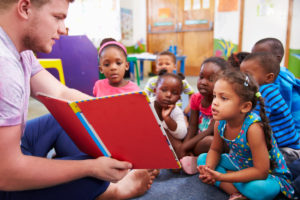 Early years providers have a duty to comply with the welfare requirements of the Early Years Foundation Stage (EYFS) statutory framework and must ensure that they are alert to any issues of concern in the child’s life.
Early years providers have a duty to comply with the welfare requirements of the Early Years Foundation Stage (EYFS) statutory framework and must ensure that they are alert to any issues of concern in the child’s life.
The Board are assured via the local authority Early Years Team who provide support, guidance and advice to the sector through a variety of mechanisms: safeguarding workshops, visits to settings, and advice around development needs, training and policy. The team are committed to working closely with the Board to support the sector in meeting their requirements and to share the learning from any local child safeguarding practice reviews, and to initiate actions that will enable practitioners to feel more confident when working with children and families. A safeguarding reflective practice tool supports the team to identify effective practice, disseminate learning and identify priorities to safeguard and promote the welfare of children.
In collaboration with early years, the Board have also developed an Early Years Safeguarding Practitioner Forum, which meets termly to discuss emerging safeguarding themes from the sector, share the learning from local reviews and pick up on good practice when it comes to the methods and platforms used to share learning and to celebrate successes that spotlight how the sector is keeping children safe.
Probation
The Probation Service is a statutory criminal justice service that supervises offenders released into the community, while protecting the public. During the course of their
duties, probation staff come into contact with offenders who:
- have offended against a child
- pose a risk of harm to children even though they have not been convicted of an offence against a child
- are parents and/or carers of children
- have regular contact with a child for whom they do not have caring responsibility.
They are, therefore, well placed to identify offenders who pose a risk of harm to children as well as children who may be at heightened risk of involvement in, or exposure to, criminal or anti-social behaviour, and of other poor outcomes due to the behaviour and/or home circumstances of their parent/carer(s).
Probation is subject to S11 requirements under the Children Act 2004, and therefore have a duty to comply with these local arrangements for safeguarding children who are at risk of offenders.
Roles and responsibilities within these arrangements are fluid and are either designed around the priority areas or detailed with specific terms of refence and/ or activity led pieces of work as part of the duties set out in Chapter 3 of Working Together 2018.
MAPPA
Many of the agencies subject to the section 11 duty are members of the Multi-Agency Public Protection Arrangements (MAPPA), including the police, prison and probation services. MAPPA work together with duty to co-operate (DTC)67 agencies to manage the risks posed by violent and sexual offenders living in the community in order to protect the public and work closely with the safeguarding partners over services to commission locally. Assurance is sought through the various performance mechanisms of the Board which strengthens this commitment via the Partnership Protocol.
Cafcass
Under in the Children Act 1989, Cafcass have a responsibility to safeguard and promote the welfare of individual children who are the subject of family court proceedings. This is through the provision of independent social work advice to the court. They too are subject to the arrangements as laid out above.
Voluntary, Community, and Social Enterprise (VCSE) organisations
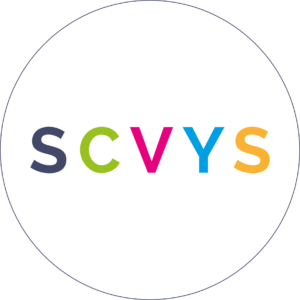 There are a vast number of voluntary and community organisations in Staffordshire who offer a wide range of support to children and families.
There are a vast number of voluntary and community organisations in Staffordshire who offer a wide range of support to children and families.
The Staffordshire Council of Voluntary Youth Services (SCVYS) is the strategic partner for the voluntary, community and social enterprise sector working with the safeguarding partners to ensure those who encounter children and families are keeping them safe.
Subject to the same safeguarding responsibilities and monitored via the performance activity of the Board, the sector works collaboratively, with the support of SCVYS, to demonstrate good practice as well as promoting the voice of the child and sharing best practice to enhance meaningful engagement.
Werrington Young Offenders Institute
The Board is responsible for ensuring that the use of restraint across all secure establishments in its local authority area to help ensure that relevant agencies in Staffordshire work together to promote the welfare and safety of all children and young people in secure settings. This includes raising the awareness of how to improve current practice and encourage local and national bodies to accordingly fulfil their statutory safeguarding children’s responsibilities. Quarterly arrangements through the Review of Restraint subgroup provide safeguarding partners with the necessary assurances.
The Voice of the Child
 The voice of the child is embedded throughout everything that the Board does, and this is reflected in the Business Plan. There are established mechanisms in place where children, young people and families can have their say, share their views and experiences, challenge and support local decision makers and shape and influence strategic planning, commissioning, and service provision at an individual, service, and strategic level, including the voices of non-verbal children.
The voice of the child is embedded throughout everything that the Board does, and this is reflected in the Business Plan. There are established mechanisms in place where children, young people and families can have their say, share their views and experiences, challenge and support local decision makers and shape and influence strategic planning, commissioning, and service provision at an individual, service, and strategic level, including the voices of non-verbal children.
Building on the strong foundation of engaging with children and families through existing mechanisms, the safeguarding partners will develop additional means for working with children and families into a more lasting approach that focuses on understanding issues that matter most to them. Safeguarding partners and relevant agencies will share how the voice of the children and families they support is heard within their agency and those messages will contribute to our overall understanding of their views.
All our work will be underpinned by a consideration of the views and experiences of our children and their families, and we expect the delivery of our priorities to actively reflect their voice. There are already strong processes and networks in place to capture children’s views, including:
- Acting upon the analysis of findings from local surveys of children and young people, particularly those who may be vulnerable.
- Seeking the views of our children in care.
- Consultation on new policies and procedures.
- Encouraging family participation in local practice reviews to maximise learning opportunities.
The voice of the child is also incorporated in all SSCB multi-agency training.
Undertaking Local Child Safeguarding Practice Reviews
The responsibility for lessons learnt from serious child safeguarding incidents lies at a national level with the Child Safeguarding Practice Review Panel (The Panel) and at a local level with the safeguarding partners.
The Board have processes in place to enable the safeguarding partners and relevant agencies to:
- identify serious child safeguarding cases which raise issues of importance.
- commission and oversee the review of those cases, where they consider it appropriate for a review to be undertaken.
The Board will ensure that necessary steps to capture learning points from cases about improvements are captured and remedial action and learning is disseminated.
The voice of family, extended family and children involved in reviews is always considered during the review along with frontline staff and partners who are involved and their feedback on the process will be monitored and evaluated.
The Board will comply with the requirements set out in Working Together 2018, sending a copy of the full report to the Panel and to the Secretary of State within the expected timescale. Local Child safeguarding Practice Reviews will also be published on the Boards website for up to 12 months.
With an ongoing commitment to continuous learning and improvement to practice, outcomes and experiences, the finding of all national and local reviews will be shared with partner agencies. Safeguarding partners will take account of the findings from the reviews with a view to considering how to identify improvements and implement changes locally.
Funding
Working in partnership means we will collaborate on how we will fund our arrangements. The three safeguarding partners will make payments towards expenditure incurred in conjunction with local multi-agency arrangements for safeguarding and promoting welfare of children.
The safeguarding partners will agree the level of funding secured from each partner, which will be equitable and proportionate, to support the local arrangements. The funding should be transparent to children and families in the area, and sufficient to cover all elements of the arrangements, including the cost of local child safeguarding practice reviews.
